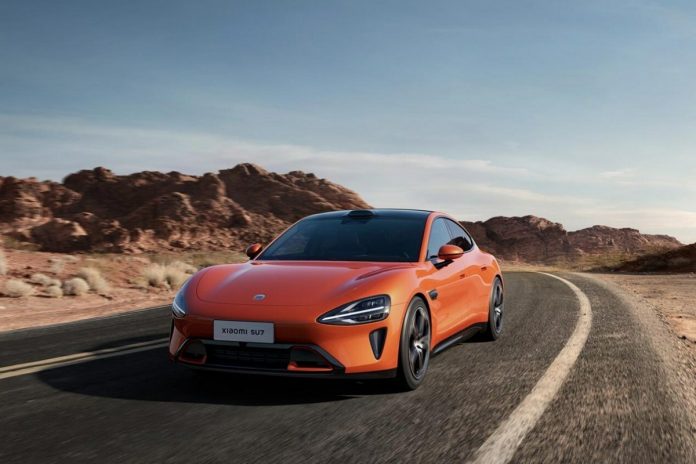Xiaomi has officially launched its first mass-produced EV, the SU7, in Beijing – representing the company’s entry into the EV market. The EV’s Pro and Max versions will utilize Hesai’s high-performance AT128 long-range LiDAR, which consumers will be able to benefit from at launch. Here, the SU7 Pro will launch in April, and the Max version will be available in May.
The new EV integrates Hesai’s LiDAR in a sleek ‘watchtower’ style on the roof, enhancing its aerodynamic performance. The collaboration between Xiaomi and Hesai more broadly works to provide an optimal solution that balances aesthetics and functionality, reducing wind resistance.
Xiaomi’s approach to intelligent driving is shown through its proprietary full-stack technology architecture, which includes advanced high-resolution perception. Its end-to-end technology simplifies intelligent driving by directly converting images into driving trajectories, offering a more human-like driving experience.
The Pro and Max versions of the SU7 are equipped with Xiaomi’s Pilot Max intelligent driving solution, which incorporates both Hesai’s ultra-high-definition AT128 LiDAR and the NVIDIA DRIVE Orin computing platform. This synergy between software and hardware aims to enhance perception reliability, providing the SU7 with enhanced intelligent driving capabilities.
The AT128 LiDAR itself features 128 independent VCSEL lasers, providing advanced imaging capabilities and long-range detection. This technology ensures rich high-quality 3D scanning to support the Xiaomi SU7’s advanced intelligent driving system while promoting safer, more efficient driving experiences.
Looking ahead, Hesai and Xiaomi will deepen their collaboration, focusing on the ‘human-vehicle-home ecosystem’ strategy. Together, the companies aim to drive the advancement of intelligent driving technology, expand application areas, and deliver safer, more enjoyable, travel experiences to users around the world.














